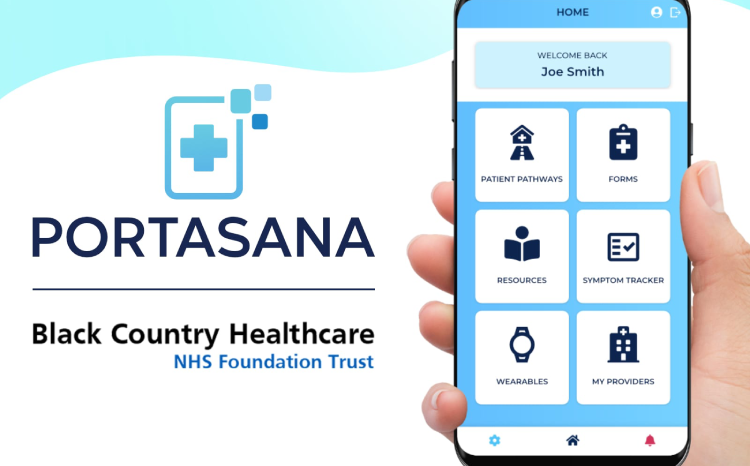Right result
- 6 May 2014

In 2007, the National Patient Safety Agency labelled the procedure for requesting radiology imaging tests and sending reports to referring health professionals as unreliable.
It warned that this was leading to untoward patient safety incidents, many involving fatalities or long-term harm, and urged NHS trusts to review their policies to make sure that requested radiology images are performed and that results are acknowledged and acted upon.
Despite this, the NHS has struggled to address the issue, prompting both the Royal College of Radiologists and the Department of Health to issue further safety guidance to the same effect.
“After experiencing several clinical incidents relating to failure to act promptly on radiology results – some resulting in avoidable patient harm – we realised we had an issue,” says Dr Rhidian Bramley, chief clinical information officer and director of radiology at The Christie NHS Foundation Trust.
“Other trusts to which we spoke also recognised this as being a significant safety risk; and were equally keen to find a solution.
“We therefore assembled a project team of senior managers and clinicians to undertake a risk assessment. They quickly concluded that, in common with many other trusts, our standard operating procedures were inadequate and that this posed the highest clinical safety risk to the organisation.”
Strong clinical engagement
The team drew up a list of clinical requirements for a solution before undertaking a market analysis. It invited three short-listed IT providers to give demonstrations of their proposed solutions to several groups of clinicians.
“However, none of these solutions sufficiently met the trust’s requirements – particularly with regard to workflow and team working,” says Dr Bramley. “Nor could we find evidence of any site having used them to achieve high levels of radiology results acknowledgement.”
“Furthermore, our clinicians were reluctant to consider a standalone solution, preferring one that might be fully integrated with our electronic patient record and contextualise radiology results as they arrive. They were also keen to avoid the time-consuming process of opening up separate systems each time.”
Having previously chaired the UK Imaging Informatics Group and overseen the national deployment of radiology information systems and other software development projects, Dr Bramley felt The Christie’s best option was to develop an in-house solution.
He therefore secured the trust’s approval to design and pilot a clinical portal, working closely with clinical staff to meet their requirements and protect patients.
“Key to our success was an agile approach and strong buy-in from clinicians,” he says. “This enabled us to incorporate significant innovations in design, functionality and safety that were typically missing from commercial products.
“Having demonstrated the prototype to a handful of clinicians, I soon had a queue at my door, all wanting to play with the technology,” he adds.
Performance management
Thanks to the implementation of the new system, clinicians now receive daily email notification of their unacknowledged radiology results.
This includes a direct link to the portal to open a dashboard showing results linked back to orders – with views for the requesting clinician, consultant and team to facilitate cross-cover and team working.
The dashboard uses red, amber, green colour coding to show where clinical teams are reaching agreed threshold times for acknowledgment which, Dr Bramley says, has helped motivate clinicians and ensure performance management.
“Users can click directly from the dashboard to view and acknowledge results with full integration to the clinical record to help contextualise results, with single-sign-on to view PACS images,” he says.
“They can escalate results within their team, refer on to other clinicians, book follow-up imaging, and create tasks which are managed by an end-to-end system right through to completion.”
Above all, Dr Bramley says the system is designed with safety uppermost in mind – including a simple but effective feature for reporting discrepancies; plus intelligent text parsing that checks radiology reports for typographical errors that have resulted in previous clinical incidents.
“The solution also uses natural language processing to identify patterns within the results and to flag these up to clinicians, as well as extracting key measurements and marker lesions to provide clinical decision support and mitigate the risk of patients continuing on treatments that are ineffective.
“Within four months, we achieved 100% radiology result acknowledgment, improved turnaround times, and enhanced clinical communication and discrepancy reporting,” he says. “Most importantly, since implementing the system, there have been no further safety incidents.”
Replicable solution
Commenting on The Christie’s success in winning the ‘best use of IT to promote patient safety’ category of EHI’s latest awards, Dr Bramley says the trust is delighted to be recognised as a leader in health systems innovation; and to pass on what it has learned to other trusts.
“The project will ensure that patients no longer come to harm due to any delay in acting on results,” he says. “We entered in this category to help raise awareness of this issue and we’re keen to share our experience with any trust looking to reduce the risk for their patients.
“I’m in no doubt that our success – through agile project development and strong clinical involvement – can be replicated elsewhere by trusts looking to create their own portals or work with their suppliers to do so.
“We have already shared our approach with a number of vendors who have shown interest in our achievement and we will continue to promote result notification and acknowledgment as a means of protecting patients and delivering service improvement.
“We have also extended the service locally to incorporate other service departments within the trust – including nuclear medicine, PET and DEXA – and are currently completing work to incorporate pathology results with further innovations to alert and escalate significant abnormal results.
“From a care quality and clinical safety perspective, I believe it would be useful in future for every trust to have such an evidence-based system; one that demonstrates what percentage of radiology results are being acknowledged and what the turnaround times are.
“For this reason, we’re keen to share what we’ve done with other healthcare providers and IT solutions vendors. The ideas and concepts within our solution are openly available to all NHS trusts to improve patient safety.”

The closing date for the EHI Awards 2014 in association with CGI is now just days away. Entries must be in by 9 May.
This year, there are 14 categories, the full details of which, along with information on how to enter, can be found on the dedicated awards website.
For information about sponsorship opportunities for the awards, or to book tickets, contact EHI’s events team on 0207 785 6924.




